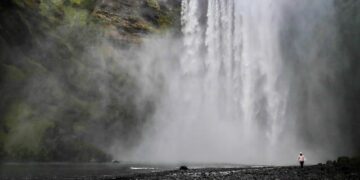In a startling revelation that has sent ripples through the historical and scientific communities alike, some of the most iconic footage from the 20th century is now confirmed lost. Reported by IFLScience, these irreplaceable visual records-capturing pivotal moments that shaped modern history-have vanished due to a combination of degradation, mishandling, and archival oversights. This loss not only deprives future generations of direct glimpses into defining events but also raises urgent questions about the preservation of our cultural and scientific heritage in an increasingly digital age.
The Vanishing Frames of History How Lost Footage Shapes Our Understanding of the 20th Century
Throughout the 20th century, countless moments of immense historical importance were captured on film, yet a significant portion of this footage has vanished, leaving gaps in our collective memory. From critical political rallies to groundbreaking cultural events, lost visuals mean losing a direct lens into the past. These absences not only challenge historians but also shape public perception by relying heavily on secondary accounts and fragmented narratives. Notably, iconic images of key figures and events-those that once held the power to sway public sentiment-remain partially or entirely inaccessible, contributing to an incomplete understanding of history’s unfolding.
The consequences of these gaps are multifaceted:
- Distorted interpretations: Without primary footage, myths and biases can fill the void.
- Lost emotional resonance: Visual evidence humanizes historical events, making them more relatable.
- Hindered academic research: Scholars must piece together stories from less reliable sources.
| Type of Lost Footage | Impact on Historical Record |
|---|---|
| Political Speeches | Reduced insight into rhetoric and public response |
| Social Movements | Weakened connection to grassroots activism |
| Technological Milestones | Compromised understanding of innovation progression |
Uncovering the Causes Behind the Disappearance of Iconic Film
The vanishing of one of the most emblematic pieces of 20th-century film footage remains shrouded in a complex web of circumstances, ranging from poor archival practices to technological obsolescence. Experts suggest that the original reels were stored in inadequate conditions, leading to inevitable physical degradation over decades. Adding to the mystery is the lack of proper documentation, which has made tracing the footage’s last known whereabouts nearly impossible. Industry insiders highlight several contributing factors:
- Neglect and Mismanagement: Archives often faced budget cuts, causing misplacement or destruction of valuable material.
- Transition Between Media Formats: Shifts from film to digital formats led to some footage being abandoned in outdated media.
- Legal Disputes: Ownership conflicts delayed preservation efforts and restricted access to archives.
A recently published table summarizing archival challenges sheds light on the broader implications for film preservation. It illustrates how these issues collectively resulted in the loss of irreplaceable visual history, underlining the urgent need for improved conservation strategies.
| Cause | Effect on Footage |
|---|---|
| Environmental Damage | Color Fading & Physical Decay |
| Format Obsolescence | Playback Inaccessibility |
| Legal Constraints | Restricted Archive Access |
| Archival Mismanagement | Permanent Loss |
Strategies for Preserving Fragile Historical Media in the Digital Age
Preserving delicate historical media requires a multifaceted approach, integrating both traditional conservation techniques and cutting-edge digital solutions. Archivists increasingly turn to high-resolution scanning and digital restoration to capture and safeguard contents from film reels, photographs, and audio recordings before irreversible deterioration occurs. Equally important is the use of climate-controlled environments and specialized storage materials that slow physical decay and prevent damage from humidity, light, and temperature fluctuations. Without these proactive measures, countless irreplaceable moments risk fading into oblivion, taking with them invaluable cultural and historical insights.
Effective preservation strategies also hinge on fostering collaboration between institutions, governments, and tech companies to ensure broad access and redundancy. Key practices include:
- Distributed digital archiving to mitigate risks of data loss through multiple back-ups.
- Use of AI-powered metadata tagging for efficient cataloging and retrieval.
- Open-source platforms that enable crowd-sourced restoration and funding.
| Preservation Technique | Main Benefit | Current Challenges |
|---|---|---|
| Digitization | Long-term access | High initial cost |
| Climate-controlled storage | Slows decay | Maintenance complexity |
| AI Restoration | Enhanced quality | Ethical concerns |
| Collaborative Platforms | Community engagement | Data security |
To Wrap It Up
The loss of such a significant piece of 20th-century history serves as a stark reminder of the fragility of our visual archives. As technology advances and efforts to preserve historical footage improve, the hope remains that future generations will not only remember these moments but also have access to the authentic records that shaped our collective past. Until then, the disappearance of this iconic footage underscores the ongoing challenge faced by historians and archivists worldwide in safeguarding humanity’s visual legacy.




























